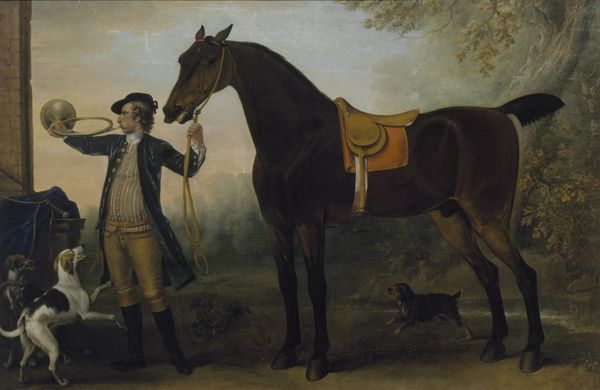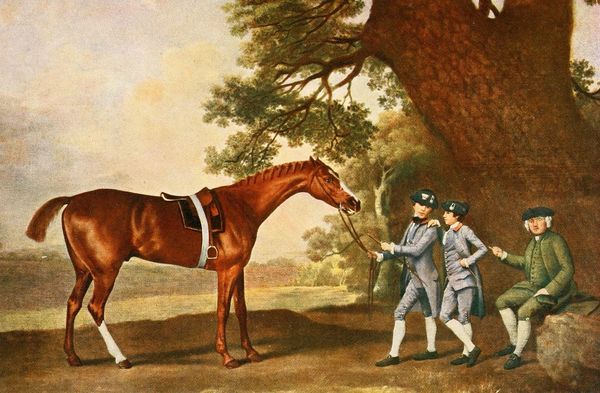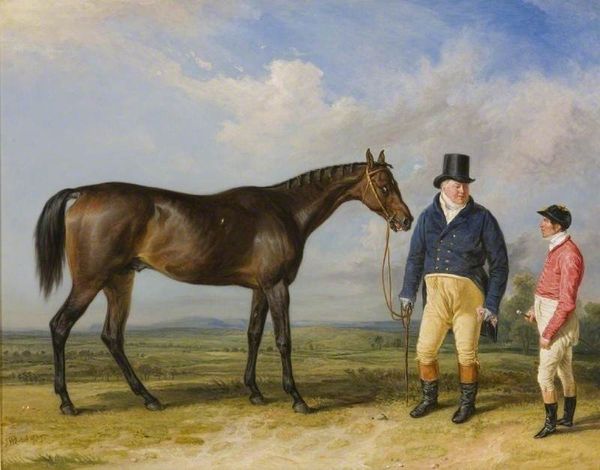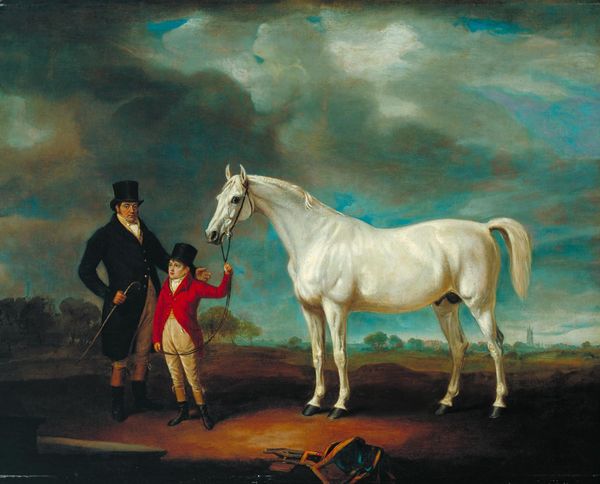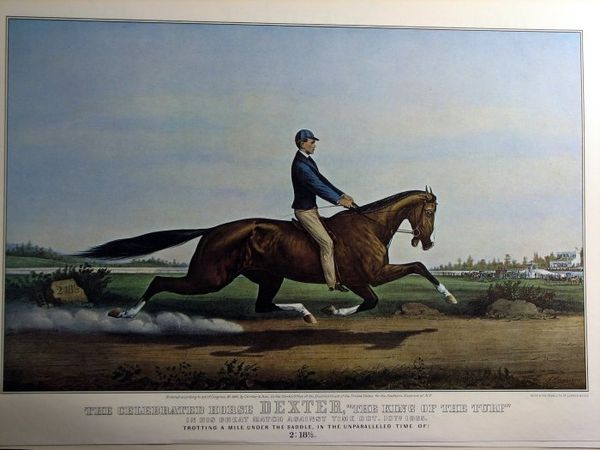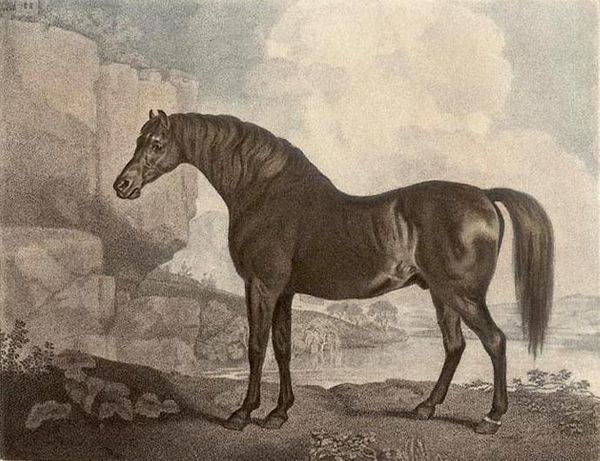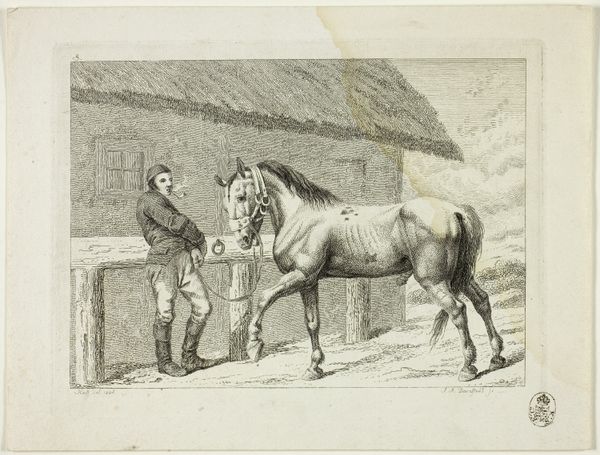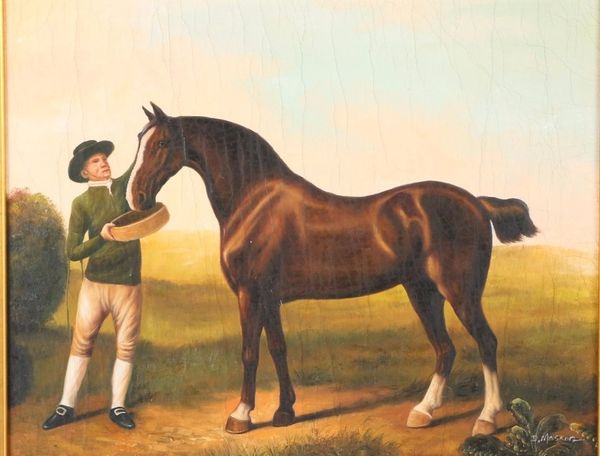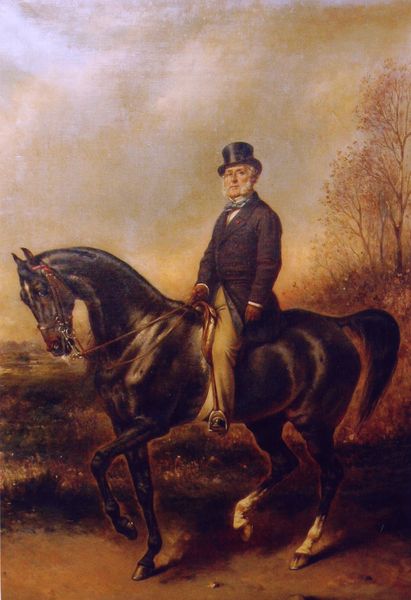
painting
#
portrait
#
painting
#
landscape
#
charcoal drawing
#
romanticism
#
horse
#
genre-painting
#
history-painting
#
realism
Copyright: Public domain
Curator: Standing before us is a work simply titled "Eclipse." Attributed to George Stubbs, it's an intriguing piece rendered with paint, blending elements of portraiture and landscape. What's your initial take on it? Editor: Well, immediately I get a sense of quiet nobility. There's this restrained palette, these earth tones… then, you catch the cool gaze of both the horse and the figure; a silent conversation seems to linger in the air. It feels quite…composed, like a tableau vivant waiting for its narrative. Curator: Absolutely. Stubbs was celebrated for his anatomical accuracy when depicting horses, achieved by his in-depth knowledge and study. Note how this focus informs not just aesthetics, but also a burgeoning industry where the animals become commodities, evaluated on lineage, conformation, and potential racing success. This attention to detail makes Eclipse a valued historical and financial entity. Editor: Yes! You know, I’m also struck by the somewhat humble presentation here. The figure who appears to be his groom is dressed quite plainly. It almost feels like a democratic sentiment poking through, contrasting this champion animal with the unvarnished humanity tending to it. Do you see any symbolism here? Curator: It is tempting to interpret symbolically! However, if we center our approach on the socioeconomic reality surrounding such commissions, then it is possible to appreciate how even in depictions deemed portraiture, what becomes clear is the power of equestrian enterprise and how breeding, training, and husbandry are materialized within elite culture through displays of labor. Editor: Okay, I can see that! Perhaps this is about labor relations depicted through very carefully rendered surfaces! Though, in turn, doesn't that almost... heighten the drama? Knowing the financial implications tied up in this single animal—does it ever feel precarious, this calm, pastoral setting juxtaposed against underlying societal complexities? Curator: Well, our contrasting perspectives remind us that artistic intention never appears singularly; context allows multiple voices to speak on what the painting does. Editor: Absolutely! In our interpretations, we are reminded how objects gather meaning; sometimes a shared scene appears vastly different depending on who gazes upon it. I quite like what both readings brought to this animal encounter. Curator: Indeed. A powerful commentary.
Comments
No comments
Be the first to comment and join the conversation on the ultimate creative platform.

